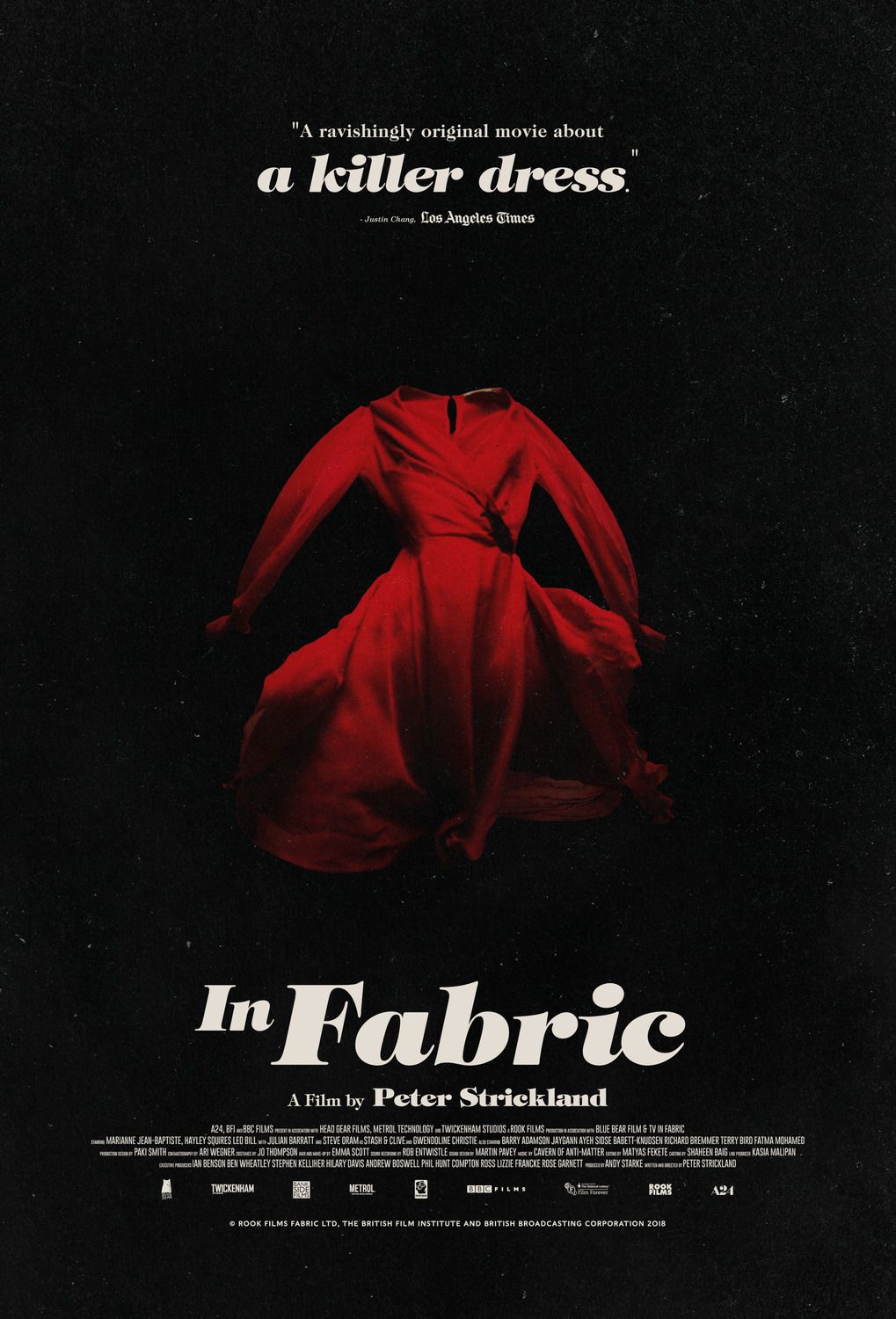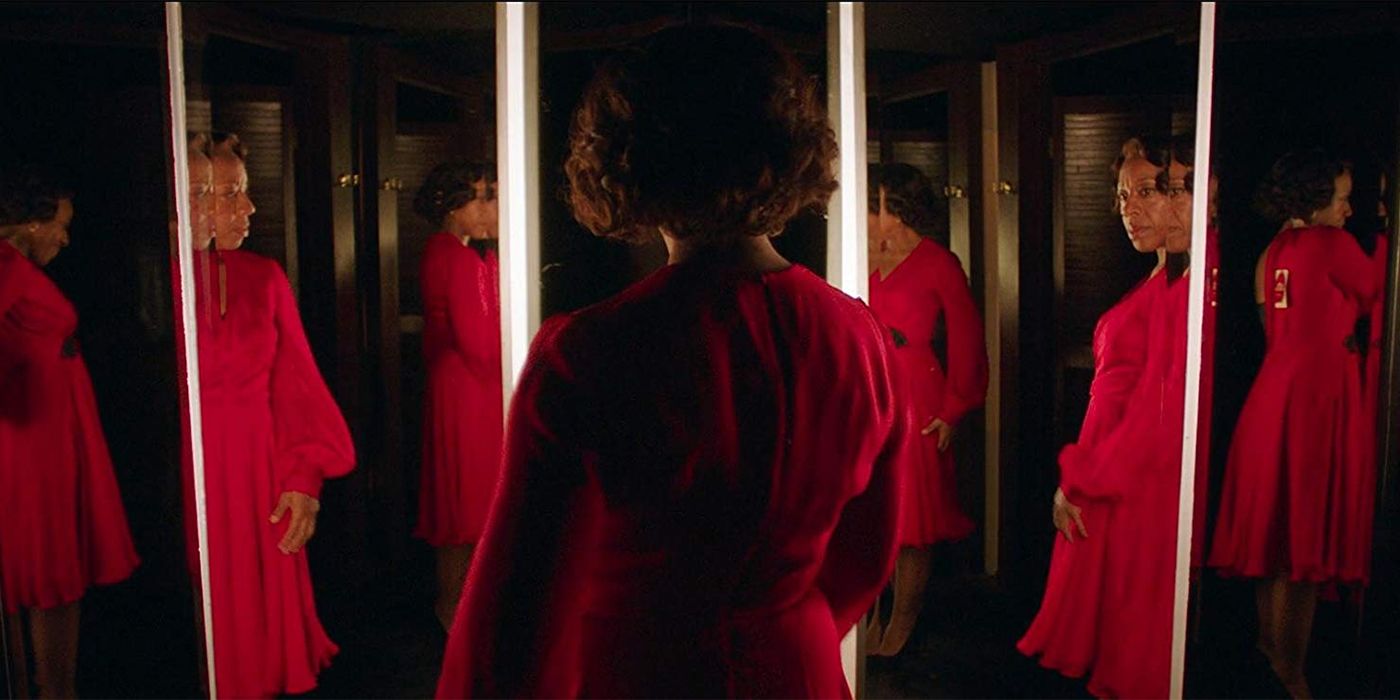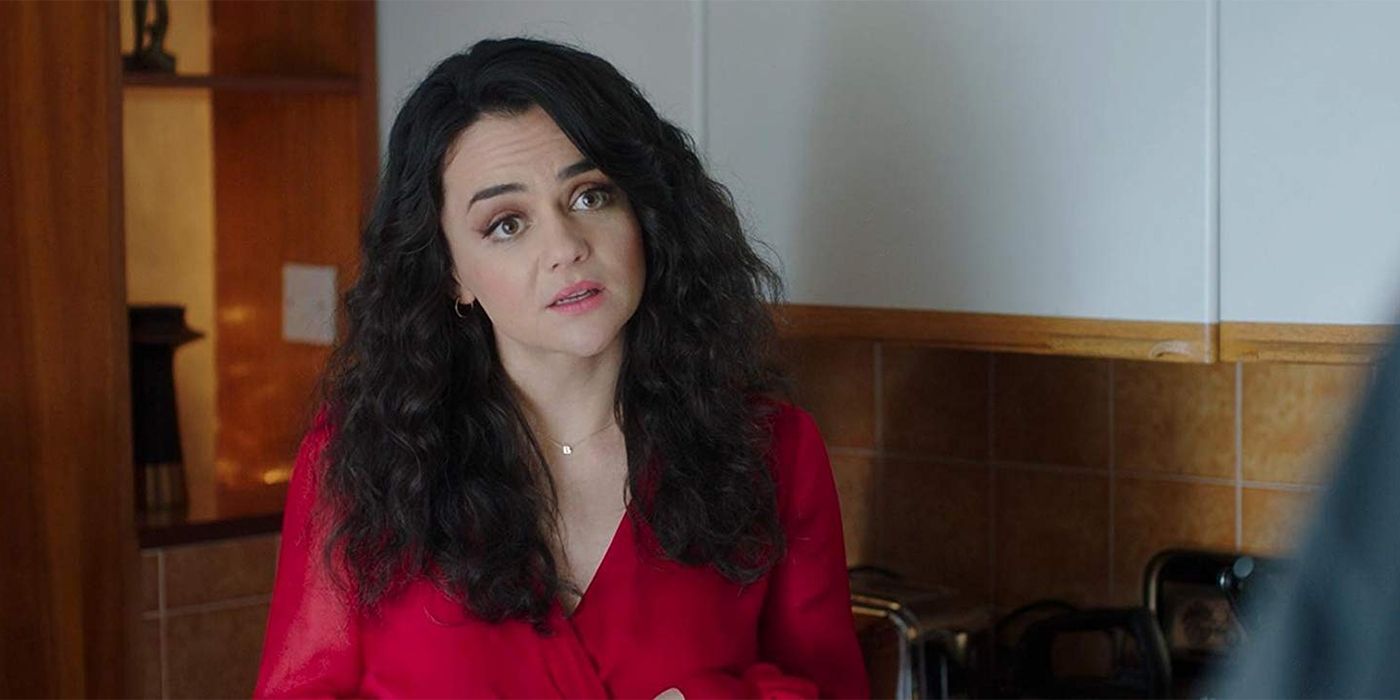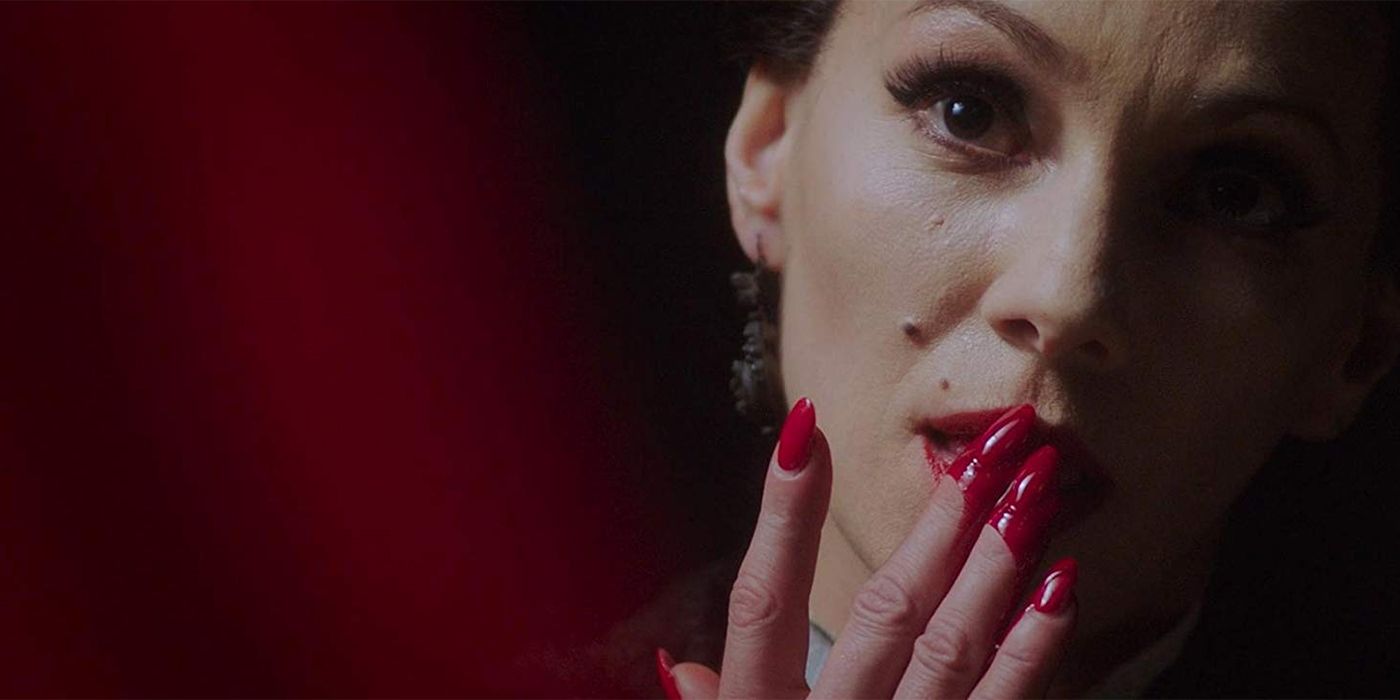In Fabric
In Fabric , the modish attempt from theatre director Peter Strickland , get in in field this weekend after finding acclaim on the fete circumference . Strickland , who has previously exploredgiallo filmsanderotic fantasyin his work , turns his artistic eye to haunt target this prison term around . In Fabricfollows a blood crimson dress that visits incomprehensible terror on all those who jade it , and the movie take in its audience to witness what happen several of its victim . The theatre director shared his impetus for such a tale with Screen Rant , as well as the process behind his themes and visual storytelling .
In Fabricwas such a ocular banquet full of symbolic storytelling . What was the initial spark that led to all of that ?
Peter Strickland : It was a mixture of tell on in secondhand store , and just being very aware of the mien of the people who wore the wearing apparel before I bought them . Whether it ’s stains , whether it ’s the smell of BO … It ’s very uncomfortable proxy intimacy , which really trigger off the imagination . You never know what that person attend like ; you ’ll never know what they did in that clothing , which really gets you guess . I think the structure , that approximation of clothing passing from person to person , came from that .

I was determine these M.R. James adaptation for the BBC , which were these very uncanny ghost stories . They ’re very still and soundless , and I just question , what if we transmit that sensibility aside from these traditionally preoccupied spaces , like the misty beach or the haunted home in the rural area ? What if I pluck one of the trashy , least haunted places , which is which is the High Street shops ?
Then you start reckon for the unfamiliar within the conversant , and certain images amount into your psyche , like eery pool cue of visible light . I was watching the newsworthiness after Christmas in Britain , and people would be queuing all nighttime long for the first day of the sales . When you ’re watching on television , it ’s always very lively and gaudy . But what if you ’re watching it from the window of the top floor as you ’re stock - pickings ? It ’s going to have a very dissimilar feel to it .
I have a go at it what you said about habiliment make a chronicle , and wondering what others have done in those shoes , literally speak . I find the scenes of the shop class prole implausibly eerie , particularly with the fashion model , because it makes you wonder who these are the people are that are handling the dress and what are they doing after hour . What was the thought process behind those scenes ?

Peter Strickland : It ’s a mixture of things . You question about those mannequins . Were they human once ? Are they becoming human , since they menstruate ? Fatma ’s fibre looks like a mannequin when she takes her wig off , so there ’s that crossover feel between the faculty and the manakin .
Obviously , there ’s this sex magic ritual go on . Bodily fluid are inherently part of clothing , though it ’s very much a proscribed subject . There ’s one vital section of that scene , which is missing from the film because we did n’t have time to flash it . I really sense the film miss out on this , but when the genus Bos ejaculates , the sperm lands on the clothes which is for sale . The next sunrise , it ’s shape this kind of argent design that a customer guess looks really fashionable , so she buy it . It ’s really an extension from the bodily fluid which are always on dress anyway , but what if they actually become the main pattern ?
Peter Strickland : Well , I have a very conflicted tone towards it , because I am a consumer . I would feel like a hypocrite if I made an anti - consumerist film . I think the pic is playfully satirizing in the setting , not with the main grapheme . But at the same clock time , obviously we ’re aware more and more these day about how high fashion is not sustainable . Not just in term of how we process workers , but also out of concern for the environs . But this is not the moving picture to get into that .

I trust that , watching the film , the audience feels they would do the same as Sheila . All that foiling at work , that frustration at home with her son ’s girlfriend and her husband leave her - of course you would want to escape and buy something skillful . I guess that ’s quite a valid emotion , the power we give clothing to transform ourselves and escape our job . I wanted to search both the euphoric side of making the purchase and the moody side , such as with Babs , who has torso dysmorphia . She ’s a captive to how she perceives her eubstance .
Really , In Fabric is just exploring very haunted , visceral reaction to clothing . Reg has his hosiery fetish from his puerility , which he ca n’t really articulate to his fiancée . She has body dysmorphia , which he ca n’t really see . Sheila ’s dreams of her bushed mother , and how she ca n’t throw her clothing off because she ’s so connected to it .
I believe that Fatma Mohamed has been in all of your cinema , or at least several of your labor . What is it that you love about working with her and what does she convey to your employment ?

Peter Strickland : I mean , I did my first lineament film with her 10 years ago . More than that , actually , since we shot it in 2006 . She had a very lowly part , and I did n’t lie with her then . We became friend afterwards . But she had a very different vigor about her , which I kind of picked up on .
Each film I did with her , I realized there were more and more sides to her . When she played the slavery carpenter in Duke of Burgundy , I detect a very different side to her - a playful , flamboyant side . When you ’ve work with someone that much , you believe , “ Okay , let ’s try out different characters . I think it ’s about time you play someone who was really really unpleasant . ” Which of course , as an actress , she relish .
It was wild ; it was a weird time because of Brexit . When I pen it , Brexit had n’t happened yet . But getting a Romanian to wreak a demonic workshop worker when there was all this [ anti - immigrant ] grandiloquence going on ? I was a snatch worried at first . But ultimately , I think actors should be free to search dissimilar roles . We discussed it , and we determine , “ allow ’s just do it . ”

I always like managing director who work with the same actors . I love the idea of going back to the same actors again and again . There ’s something really exciting about that , both as a music director and as someone who watches films .
The metre period ofIn Fabricfelt so specific , with the technology available contributing to the patch . Why did you select to set it in the pre - internet era ?
Peter Strickland : There was only one reason . When you write , you always want to find a dynamic means to introduce the opening character , and there ’s something interesting about those Lonely Hearts adverts . You ’ve got a little box to distinguish yourself in the most flattering mode potential . Obviously , punk relies on images , so I ca n’t practice that .
So , here ’s this theatrical role , and this is how she wants herself to be seen by the world . And then you ’ve bring forth this shop with dissimilar adult female working behind the methamphetamine . Which one is that person ? That was what I wanted to do . And I imagine ‘ 93 , when the film was put , was one of the last age that kind of matter was going on . Because on-line geological dating was starting to become more dominant .
That was the only reason ; otherwise I would have said it now . I want the contrast between the store which always feel stuck in a fourth dimension that ’s never beyond the LXX , so there ’s a very anachronic calibre of being thrown back into the 1970s . But Lonely Hearts was the only thing keeping me from setting it now .
speak of the Sheila and the Lonely Hearts , her plot line was so engrossing that I was surprised whenIn Fabricended up being more a series of sketch . At what point had you decided that you wanted to show the wearing apparel traveling through several propagation , as it were ?
Peter Strickland : From the very beginning , it was always going to go from character to character . But the thing was to drop enough metre with the characters that you give care about them . I did n’t want the character to finger disposable . If they ’re disposable , then the film read as this kind of angry , anti - consumerist message film . Like I ’m penalise them .
I do n’t see the dress as an avenging holy person . Like most fearful things in life , it ’s random . masses die randomly ; there ’s no judgment to it . That ’s much more incubus - ish and much shivery . So , you pass metre with each character to mould out what their Hope , fears and desires are . Why does Sheila go to the store and grease one’s palms the dress ? I go for you never see her as a consumerist , or any of the lead characters . But it was always a sequence , savagely cut a living short and going to the next one .
One sequence that I really loved was the sweatshop from Hell . How did that scene total to beware , and how solidly should it be interpreted ?
Peter Strickland : At the very kickoff , when I wrote the first rough drawing , it was a very unlike structure . There was much more of an component of social realism , and the estimation of victimization . I finger very uncomfortable going in that direction - nothing against other people making those kinds of photographic film , I just do n’t feel I have the skills to do that form of film . I ’d feel like a hypocrite because , ignominiously , I do n’t always control where my clothes are made from .
I want to keep the melodic theme out there for the consultation , but I did n’t want to forge them over the head with it . So , I determine to have it as a fantastical element rather than as a naturalistic one , which It felt safe in the linguistic context of the whole moving-picture show .
lastly , what was the most thought-provoking aspect of directingIn Fabric , and what was the most rewarding one ?
Peter Strickland : My last film was two people in a way , pretty much . Whereas this one had many more grapheme and many locating . There were many things I had n’t done before . Usually , I make quite human dramatic play , and suddenly I ’m having dog attacks and washables machines go addict .
So , I really learned to swear on my team . You always have to rely on a team , but I had to get a lot of help . I feel out of my depth , because I cognize what I wanted to show but not how to do it . That was tough , throw 27 solar day to shoot that . It was not a relaxed shoot ; it was constant accent . I ca n’t say there was a lot of laughter when we made the celluloid .
The rewarding part ? I guess just gravel it made . I think for me it was the first viewing in Toronto . Because when you edit a pic , there ’s always somebody who does n’t like it , you know ? And that really make for into your insecurity about what you do . I imply we ’re all insecure as theater director and as human beings . Of naturally , you ’re frightened to show it to someone . So , to hear that laugh was very reassuring . It was an amazing high , to be honest .
More : In Fabric Interview with Marianne Jean - Baptiste
In Fabricopens in theaters December 6 and on demand December 10 .